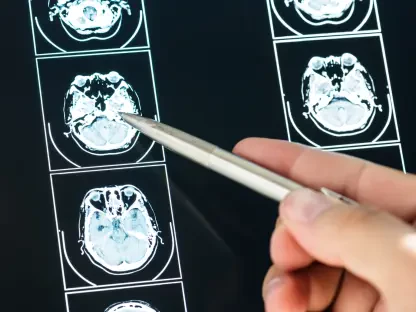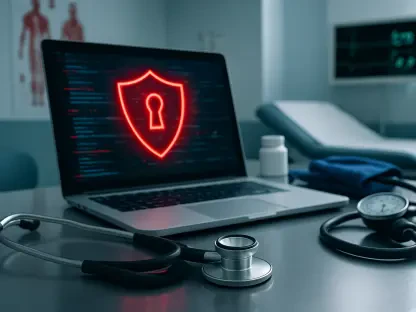In the rapidly evolving landscape of technology, the Internet of Things (IoT) has established itself as a transformative force driving digital innovation and connectivity across industries. As the adoption of IoT continues to surge, driven by its transformative capabilities and applications across sectors, the implementation of secure and scalable IoT solutions has become a critical priority for businesses looking to optimize operations and enhance customer experiences. In light of these advancements, the focus has now shifted towards the importance of development services that convert innovative IoT concepts into robust, market-ready applications. Against this backdrop, an exploration into the significance of IoT development services and their pivotal role in crafting connected solutions reveals the transformative potential of this technology. With businesses poised to leverage IoT capabilities for efficiency gains and new business opportunities, understanding the nuances of IoT application development has never been more crucial.
The Importance of IoT in Modern Business
Revolutionizing Industries with IoT
The rise of IoT has driven a marked transformation across various industries as businesses increasingly leverage connected devices to gain competitive advantages. The proliferation of these devices—reportedly around 30 billion—demonstrates a growing commitment to unlocking the diverse benefits of IoT technology in today’s interconnected world. Driven by its ability to streamline operations and introduce novel customer benefits, IoT applications have emerged as indispensable tools for industries ranging from smart homes to automotive, healthcare, and more. These applications empower companies to bridge physical and digital realms, delivering real-time data and insights that fuel smarter decision-making and operational efficiency.
Simultaneously, IoT has unlocked unprecedented potential in the realm of predictive capabilities. By facilitating seamless communication between devices, real-time data streaming, advanced automation, and AI integration, businesses can proactively anticipate trends and optimize strategies. The strategic deployment of IoT applications, coupled with analytics and machine learning, enables industries to transition from reactive to proactive approaches. Moreover, IoT’s role in reshaping customer experiences is particularly pronounced in sectors like healthcare, where it enhances remote patient monitoring, personalized care, and data-driven interventions. Similarly, the industrial sector benefits from predictive maintenance and enhanced supply chain visibility, presenting opportunities to significantly improve cost-effectiveness and sustainability.
Key Considerations for Effective IoT Implementation
As businesses seek to integrate IoT systems successfully, it is imperative to address pivotal considerations to ensure effective implementation. Foremost among these is the importance of security and data privacy. IoT applications often involve the processing and transmission of sensitive information, necessitating robust security protocols. Integrating security features such as encryption and access controls is fundamental to mitigate potential risks and safeguard data integrity, a vital concern for enterprises navigating the regulatory landscape. Additionally, achieving seamless interoperability across diverse devices requires foresight, as varied technology ecosystems demand meticulous planning and execution.
Scalability also remains a cornerstone of successful IoT implementation, requiring businesses to prepare for exponential growth in connected devices. Ensuring that infrastructure can accommodate future demands without compromising performance is essential. Furthermore, aligning IoT solutions with user-centered design principles enhances usability and accessibility, driving adoption and engagement. By fostering an iterative, agile development process, organizations can cater to evolving user needs and industry standards. Enabling over-the-air updates and support for multi-device ecosystems further ensures adaptability in this dynamic landscape.
The Role of Development Services in IoT Success
Crafting Robust IoT Applications
Achieving IoT success mandates partnering with capable development services that possess the expertise to translate ideas into high-performing applications. These development services play an essential role in guiding organizations through the intricate IoT landscape, addressing challenges and optimizing potential benefits. Partnering with firms known for advanced technical knowledge, commitment to quality, and industry-specific expertise enables companies to confidently navigate IoT development from concept to deployment. Technology providers such as Stormotion are pivotal in bringing this vision to life, offering comprehensive development services that cover every facet of IoT application creation.
The development journey begins with a thorough understanding of client needs and industry nuances. Through workshops, research, and collaborative engagement, development teams gather insights necessary to craft applications that align with business objectives. The process of designing effective IoT applications encompasses various stages, including user experience (UX) and user interface (UI) design, technology stack selection, and full-stack development. Importantly, a focus on modularity and scalability at every phase ensures that the resulting applications can gracefully accommodate future growth and evolving requirements, setting a foundation for enduring success.
Monetization Strategies for IoT Applications
An integral aspect of IoT application development involves crafting effective monetization strategies that generate sustainable revenue streams. Several viable models exist, each catering to distinct industry needs and user preferences. Subscription-based services are popular, with businesses charging regular fees for ongoing access to IoT capabilities. This model suits companies offering continuous value through features like analytics, insights, and process automation. Alternatively, the freemium approach draws users with basic, free features, encouraging upgrades to premium offerings for advanced functionalities. By adopting this strategy, businesses can broaden user bases and cultivate customer loyalty.
Another enticing option involves the bundled pricing model, pairing hardware and software for a comprehensive, value-driven offering. This approach appeals particularly to industries like smart homes and automotive, delivering seamless device integration and maximizing user experience. For companies seeking innovation, the Data-as-a-Service model holds potential, enabling businesses to monetize insights derived from IoT-generated data. Selecting the optimal model relies on analyzing factors such as market dynamics, industry specifics, and user behavior. Thoughtful alignment of monetization models with objectives ensures robust profitability and contributes to sustained IoT-driven growth.
Navigating Challenges in IoT Development
Addressing Interoperability and Compliance
A successful IoT endeavor demands careful consideration of challenges that can impede development and deployment efforts. One major obstacle is ensuring interoperability among diverse devices, protocols, and standards. To overcome this, businesses must adopt strategies to create flexible systems capable of harmoniously integrating components across varying ecosystems. This can be achieved by adhering to open standards and leveraging APIs that facilitate seamless communication and data exchange. Comprehensive testing and validation processes are crucial to identify potential compatibility issues early on, allowing for timely adjustments and minimizing disruptions.
Compliance with regulatory requirements represents another critical challenge in the IoT landscape. Organizations operating in sectors like healthcare and finance must navigate complex legal frameworks, including HIPAA, GDPR, and others, to ensure data protection and privacy. Robust data governance practices, transparency in data management, and adherence to relevant legislation are essential to establish trust and mitigate risks. Collaborating with experienced IoT development partners that understand regulatory nuances becomes invaluable, as they offer expertise and guidance to navigate compliance hurdles and align practices with industry standards.
Emphasizing Security and User Experience
Security remains a non-negotiable aspect of IoT development, as connected devices pose potential vulnerabilities that could compromise systems. Thus, organizations must prioritize the implementation of robust security measures. Strategies include incorporating end-to-end encryption, regular security audits, and real-time threat detection. Role-based access control and authentication mechanisms further enhance data protection, while secure over-the-air updates ensure continuous protection against emerging threats. By embedding security at every stage of development, enterprises can build user trust, safeguard sensitive data, and avert potential legal ramifications.
In tandem with security, a compelling user experience is essential to maximize IoT adoption and engagement. User-centered design principles advocate for applications that are intuitive, accessible, and user-friendly, catalyzing seamless interaction. This user-centric focus extends to the feedback loop, where user insights drive iterative development and feature refinement. Incorporating features like customizable dashboards, real-time notifications, and responsive interfaces enhances usability and satisfaction. Consequently, businesses benefit from increased user retention and brand loyalty, underscoring the importance of aligning IoT solutions with user-centric design.
The Path Forward for IoT Solutions
In today’s fast-paced technological world, the Internet of Things (IoT) stands out as a groundbreaking force in digital innovation and connectivity across a variety of sectors. As its adoption grows, propelled by its transformative capabilities, businesses are increasingly prioritizing the development of secure and scalable IoT solutions to optimize operations and enhance customer experiences. This shift in focus highlights the importance of development services that turn innovative IoT ideas into robust, market-ready applications. In this context, examining the role of IoT development services in creating connected solutions reveals the substantial potential of this technology. As companies prepare to harness IoT for efficiency improvements and new business opportunities, gaining insight into IoT application development is more crucial than ever before. Understanding how to craft these solutions can greatly impact a business’s ability to stay competitive and meet the demands of an increasingly connected world.









